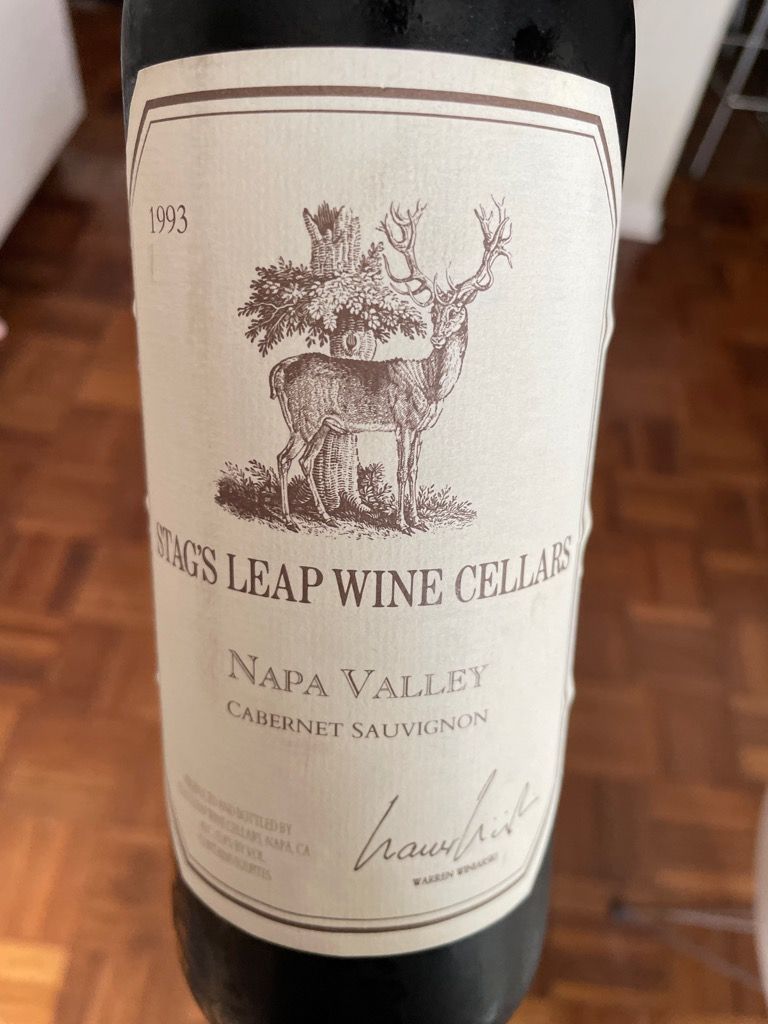
External search
Google (images)
Wine Advocate
Wine Spectator
Burghound
Wine-Searcher
Vintages
2021
2020
2019
2018
2017
2016
2015
2014
2013
2012
2011
2010
2009
2008
2007
2006
2005
2004
2003
2002
Show more
From this producer
Show all wines
All tasting notes
|
| Drinking Windows and Values |
| Community Tasting History |
| Community Tasting Notes (average 85.3 pts. and median of 90 pts. in 5 notes) - hiding notes with no text | | | Tasted by JMGray on 2/29/2020: Jamy (900 views) | | | Tasted by nytiger on 1/3/2012 & rated 89 points: just fine (3032 views) | | | Tasted by soyhead on 11/4/2010 & rated 91 points: nose - per brian loamy earth, cranberry, flowers. mouth - dark cherry, dried cherry, serious cherry, cherry liqueur. This has held up well. (3210 views) |
| Stag's Leap Wine Cellars Producer website
NOTE: This is easily confused with Stags' Leap Winery, but Stag's Leap Wine Cellars is a different winery. Stag's Leap Wine Cellars is considered one of Napa Valley's first-growths. "We were founded by Warren Winiarski and his family in 1970 and are best known for our estate-grown Cabernet Sauvignons — CASK 23, S.L.V., and FAY. Over the years, our wines have become some of the most highly regarded and collected wines worldwide. They are fashioned to express classic elegance, structure, and ageability, and to reflect the place in which they are grown." Stag's Leap Wine Cellars was known only in the Napa Valley until the now-famous 1976 Paris Tasting, when Winiarski's 1973 Cabernet Sauvignon, the first wine produced at the new winery, bested four top-ranked Bordeaux entries, including first-growths Château Mouton-Rothschild and Château Haut-Brion. The tasting landed Stag's Leap Wine Cellars squarely among the ranks of the world's most noteworthy Cabernet producers and placed Winiarski among the ranks of world's most respected winemakers. It also fundamentally transformed how Californian wines were viewed worldwide [StagsLeap See details here].Cabernet SauvignonCabernet Sauvignon is probably the most famous red wine grape variety on Earth. It is rivaled in this regard only by its Bordeaux stablemate Merlot, and its opposite number in Burgundy, Pinot Noir. From its origins in Bordeaux, Cabernet has successfully spread to almost every winegrowing country in the world. It is now the key grape variety in many first-rate New World wine regions, most notably Napa Valley, Coonawarra and Maipo Valley. Wherever they come from, Cabernet Sauvignon wines always seem to demonstrate a handful of common character traits: deep color, good tannin structure, moderate acidity and aromas of blackcurrant, tomato leaf, dark spices and cedarwood.
Used as frequently in blends as in varietal wines, Cabernet Sauvignon has a large number of common blending partners. Apart from the obvious Merlot and Cabernet Franc, the most prevalent of these are Malbec, Petit Verdot and Carmenere (the ingredients of a classic Bordeaux Blend), Shiraz (in Australia's favorite blend) and in Spain and South America, a Cabernet – Tempranillo blend is now commonplace. Even the bold Tannat-based wines of Madiran are now generally softened with Cabernet SauvignonUSAAmerican wine has been produced since the 1500s, with the first widespread production beginning in New Mexico in 1628. Today, wine production is undertaken in all fifty states, with California producing 84% of all U.S. wine. The continent of North America is home to several native species of grape, including Vitis labrusca, Vitis riparia, Vitis rotundifolia, and Vitis vulpina, but the wine-making industry is based almost entirely on the cultivation of the European Vitis vinifera, which was introduced by European settlers. With more than 1,100,000 acres (4,500 km2) under vine, the United States is the fourth-largest wine producing country in the world, after Italy, Spain, and France.California2021 vintage: "Unlike almost all other areas of the state, the Russian River Valley had higher than normal crops in 2021, which has made for a wine of greater generosity and fruit forwardness than some of its stablemates." - Morgan Twain-Peterson Napa Valley Napa Valley Wineries and Wine (Napa Valley Vintners)Napa ValleySt. Helena |
|




